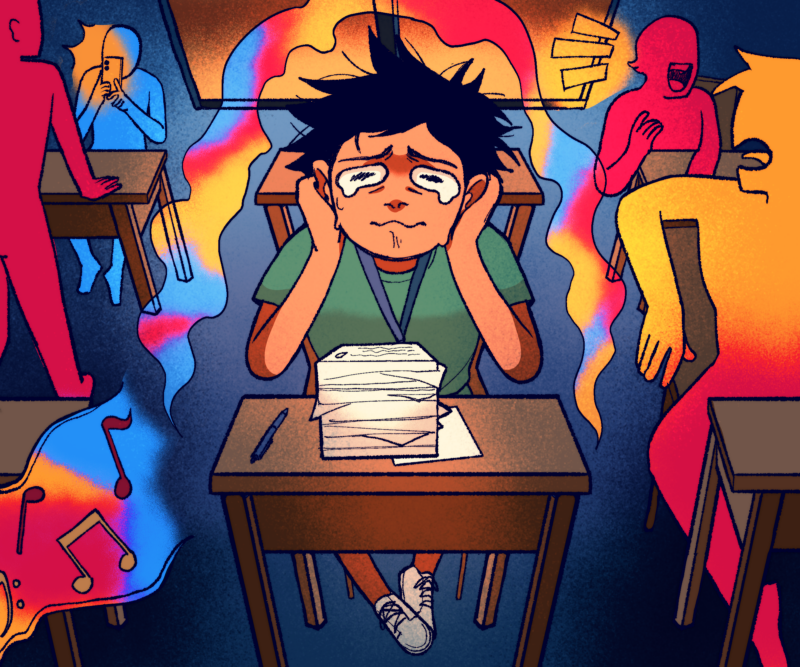More than a decade since the Kyoto Protocol, which called for an extension of the United Nations Framework Convention on Climate Change, was set in motion, the concept of going green has steadily been finding its way into Filipino consciousness.
With a near-consensus on corporate social responsibility, it is evident that Filipinos recognize that businesses must take into account the environmental consequences of their actions. However, for the individual consumer, the picture isn’t as clear-cut. Pro-environmental attitudes like reducing consumption and segregating waste have been finding their way into social norm, but the degree to which these are observed still varies greatly from person to person.
More recently, Filipino consumers are turning to new trends in the environmental movement. The youth are beginning to use and invest in metal straws, bamboo toothbrushes, and eco-friendly outfits, which has ushered in a new kind of consumer product. This new wave of innovations champions the environmental cause while also maintaining market competitiveness and profit-orientation.
Ateneans have been quick to adapt to this trend. The ubiquity of the movement is evident, especially as prominent coffee shops, startups, and even aspiring entrepreneurs on Ateneo Trade start to dabble in selling eco-friendly alternatives to their original offerings. However, while these products have been gaining traction, some people have also began to question their efficacy and actual environmental impact.
Conscious campus
This trend falls under the umbrella of conscious consumerism, defined by the Network of Business Sustainability as “consumers [purchasing] products or services with social and environmental considerations in mind.” The use of metal straws is just one manifestation of conscious consumerism on campus.
The presence of this movement isn’t much of a surprise, as the Ateneo community has always been quick to adapt to sustainable initiatives. Aside from the use of refillable water bottles, many students also follow the Bring Your Own Baunan initiative. According to its website, the Ateneo Institute of Sustainability even has an extensive Campus Sustainability Program to “[keep] in mind the long term costs and effects of decisions being made today.” There are also student organizations committed to the environmentalist cause, such as the Ateneo Environmental Science Society and the Institute of Skin Divers Ateneo.
“Ateneo is [sustainable] in many ways,” affirms waste management enterprise Sip PH Founder Pocholo Espina (BS HS ‘16). He cites the Materials Recovery Facility and the Rainwater Harvesting System as just some of the ways by which the University has systematized pro-environmental behavior on campus. In particular, the Materials Recovery Facility is a system that allows the waste produced on campus to be put to good use as “recyclables and dry paper are sold to accredited recyclers, and the revenue is given to [the] maintenance staff bonus fund,” according to the Ateneo Institute of Sustainability.
With such behaviors and systems in place, it is no wonder that the trend has spread quickly around campus. Sustainable living—in big and small ways—has become ingrained in Atenean life.
Economics of sustainability
Social media has led consumers to believe that actions such as boycotting unethical brands and choosing to buy pesticide-free food are always good. However, examining this push towards sustainable consumption under an economic lens reveals significant caveats that must be considered.
Head of Cornivus University of Budapest’s Sustainability Indicators Research Center Maria Csutora notes in her study that there is “no significant difference between the carbon footprints of ‘green’ and ‘brown’ customers.” While a product may be eco-friendly for usage, it is possible that its production or distribution generates a carbon footprint that is equivalent to or even more than what it is seeking to replace. The finding implies that the difference between a lifestyle that makes use of regular consumer products and another that is actively eco-friendly might not be so significant after all.
Furthermore, the study points to gaps in consumer behavior as a key reason for the lack of difference in carbon footprint between the two consumers. Increased awareness of environmental causes did not necessarily translate into widespread changes in consumer behavior.
Similarly, James Blake of Cambridge University’s Department of Geography addresses these factors in the value-action gap. He notes that there are barriers preventing us from affecting change environmentally that manifest practically and psychologically. For instance, switching to electric cars or solar panels may be logical and strategic, but both are still very expensive and largely inaccessible for the average Filipino consumer. In terms of our own perceptions, we may sometimes feel distanced from the notion of helping the environment, lose a sense of responsibility in doing our part, or feel that our environmental efforts are enough when they aren’t quite yet.
It’s clear that sustainability involves a lot more than just buying eco-friendly products or spreading awareness. While many such movements do have their merits, economic, cultural, and even political factors must always be accounted for. If not, one runs the risk of potentially causing more harm to the environment. The nuances of the topic can be intimidating to the average consumer, and many turn to conscious consumption in an attempt to situate themselves in the ecosystem of sustainability.
Dynamic ecosystem
However, former economics lecturer and current City Advisor for C40 Cities Climate Research Group Marvin Lagonera weighs in with a silver lining, saying, “Environmental trends such as conscious consumerism, even if oftentimes perceived as small-scale, are crucial in shaping broader societal change.”
Lagonera stresses the importance of individual behavior in reaching sustainability goals, as it is through changes in behavior that the systems in place are forced to change. “In the field of sustainability, shaping people’s behavior is one of the most challenging aspects such as when we introduce a new green local policy or ordinance.”
Although the net effect per individual is marginal, shifts in consumption are necessary in order to drive larger scale change. “These trends and sentiments could serve as trigger points to signal policy-makers and private companies to rethink old practices and systems and introduce new policies and innovate,” Lagonera adds. He argues that such trends contribute to the decline of consumer preference for old products which then boost demand for alternatives.
Espina echoes these insights. Stressing the importance of advancing environmental goals institutionally, he believes that organizations must be held accountable for their actions, and that the burden of environmental responsibility must be heavier on manufacturers. The system must work to incentivize good behavior, such as commuting and biking as one’s primary modes of transportation, and penalize bad behavior. He notes creating more intuitive symbols to make segregating trash as an easier and more efficient process as a possible way to institutionalize this behavior.
Although it may seem like a far-off goal for consumers, wide-scale social change has been achieved because of shifts in consumer behavior. Lagonera cites solar electric vehicles, organic products, and LED light bulbs, which are goods that used to be expensive “niche industries.” These products used to cater only to small market segments, but have since expanded because of the pro-environment movement. Economies of scale also have a part to play. When more consumers begin to demand more sustainable products, greater competition between manufacturers leads to more innovation and increased accessibility and affordability.
Securing sustainability
It’s clear that the pursuit of sustainability involves an intertwined web of stakeholders. Environmentalism involves much more than one’s own individual impact. A person may choose to buy eco-friendly products, advocate for veganism, or boycott companies that harm the environment, but the most important denominator—a community effort—is needed in order to change the economic ecosystem behind sustainability. Ultimately, the individual thrust towards sustainability is only meaningful in the transformation from individual to collective consciousness.
Lagonera points out that the question now is not whether following the trends in conscious consumerism should be a requirement to be environmentally responsible, but how to channel these trends towards greater social impact. “I think this is already happening in the case of reusable metal straws. It has boosted massively public consciousness in fighting plastic waste and ocean pollution, and more and more business establishments and cities are now banning plastic straws in varying degrees,” he says.
While the surge of interest in conscious consumerism may be seen as a fad, there are still ways to secure its longevity. Espina asserts that exposure is the critical first step in educating oneself on the complexities of sustainability and the conscious consumerism phenomenon. He suggests joining non-government organizations, or even just looking into on-campus environmental organizations and forums. Metal straws emerged simultaneously with other trends in ethical consumption, such as the boycott of Jollibee and NutriAsia over contractualization, cementing the idea that the consumer indeed has power.
At the end of the day, it’s important for consumers to situate themselves within the system at large by recognizing the impact of their consumption behavior, but also understanding the need to challenge institutional practices and norms. It is evident, then, that conscious consumerism is just a small part in the growing narrative of socio-economic change. Even in giving into ‘trendy’ buys as a collective effort, we have the capacity to exert our power as consumers to make a difference even beyond the environmental field.







